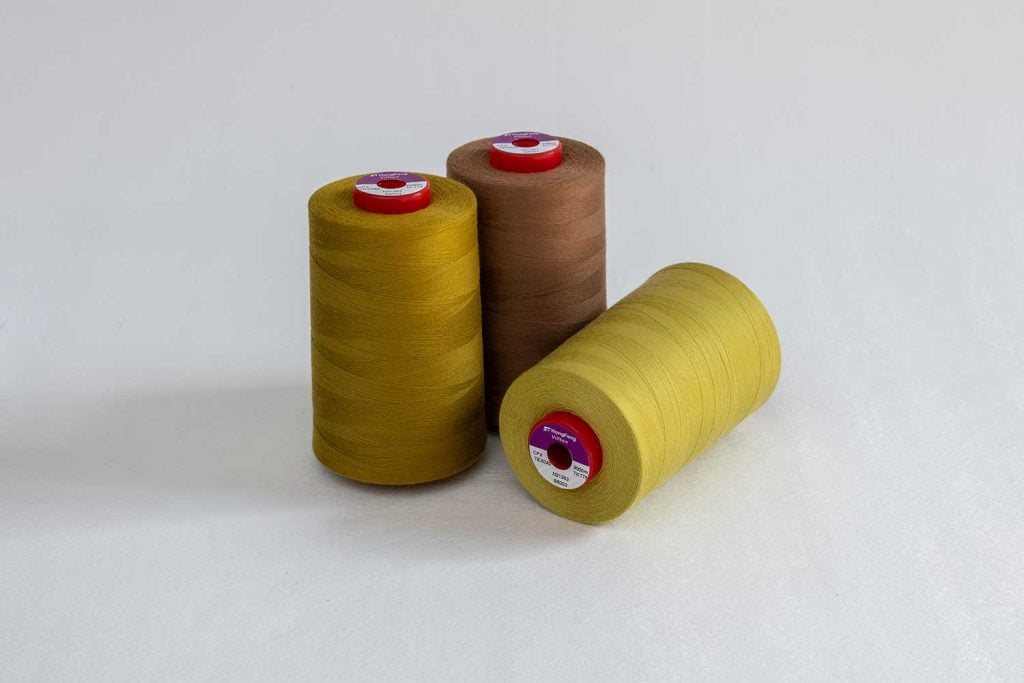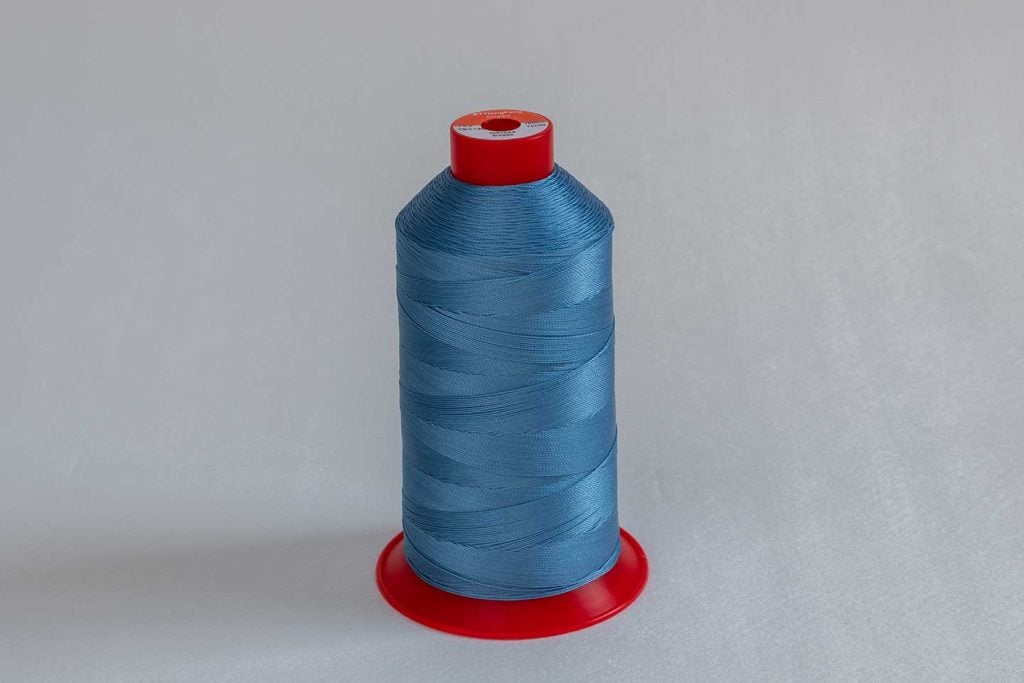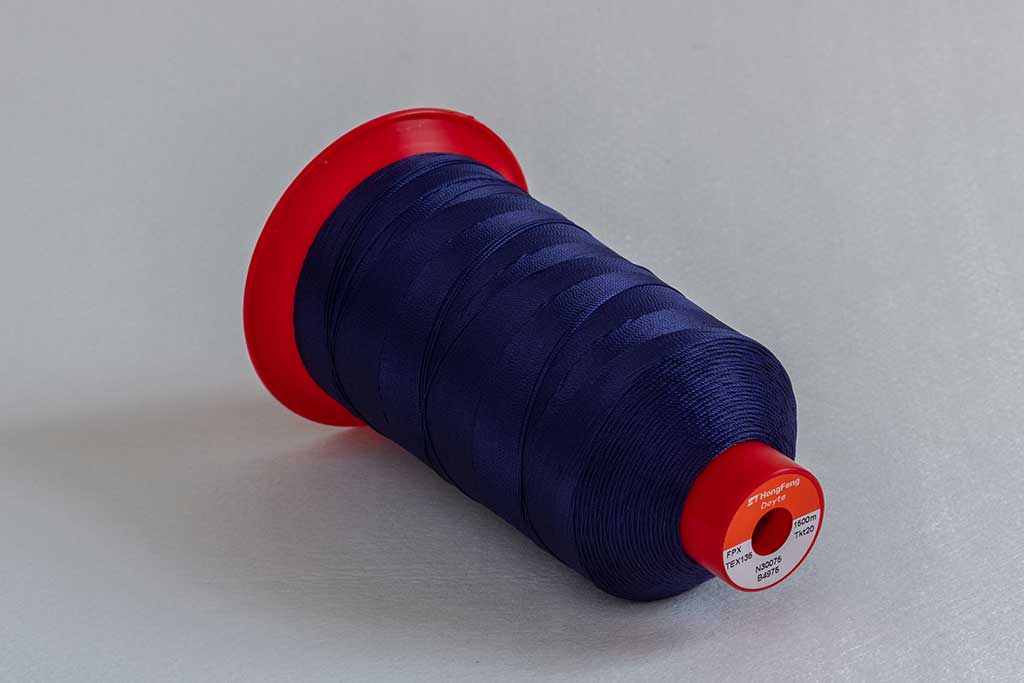Sewing thread is the thread required for knitted clothing products. According to the raw materials, sewing thread can be divided into three categories: natural fiber, synthetic fiber sewing thread, and mixed sewing thread. With the development of the polyester industry, more and more sewing threads use pure polyester fibers as their raw materials.



Read More: Thread for Sewing Machine, Best Thread Suppliers
Table of Contents
Basics
Concept
Through the twisting of the fiber structure of the wire, the relative angular displacement between the cross-sections of the wire is produced, and the structure of the wire is changed by the inclination of the straight fibers and the axis. Twisting can make the thread have certain physical and mechanical properties such as strength, elasticity, elongation, gloss, and hand feel. It is expressed in terms of the number of turns per unit length, commonly used times per inch (TPI), or number of turns per meter (TPM).
Roundabout
A 360-degree rotation around the axis.
Orientation (S-or Z-direction)
When the sliver is vertical, the direction of the helix is formed by the rotation around the axis. The tilt direction of the S direction is the same as the middle of the letter S, ie, the right-hand direction or the clockwise direction. The z direction of the z direction is the same as the center of the letter Z, ie the left hand or counterclockwise.
The relationship between twist and strength
The twist of the thread is proportional to the strength, but after a certain degree of strength, the strength drops instead. If the enthalpy is too large, the yoke angle increases, the luster of the line is poor, and the hand feels bad. When the squat is too small, the hairiness and feel are loose. This is because the increase in twisting increases the frictional resistance between the fibers and increases the strength of the wire. However, when the twist increases, the axial force component of the sliver becomes smaller, and the stress distribution of the inner and outer fibers is uneven, resulting in the inconsistency of fiber breakage.
In short, there is a close relationship between the fracture performance, strength, and twist ability of the wire. The twist and twist are determined according to the needs of the finished product and post-processing and are generally Z twist.
Most Common Polyester Sewing Thread
Polyester sewing thread is twisted from polyester long or short fibers, is wear-resistant, has low shrinkage, and has good chemical stability.
- Polyester fiber is a kind of high-quality synthetic fiber. It is used to make sutures with high strength. It ranks second only to nylon threads among all kinds of sutures, and it will not reduce its strength in the wet state.
- The shrinkage rate of polyester sewing thread is very small, and the shrinkage is less than 1% after proper shaping, so the stitches sewn can always remain flat and beautiful without shrinkage.
- Abrasion resistance is second only to nylon.
- Low moisture regains good high-temperature resistance, low-temperature resistance, light resistance, and water resistance.
A polyester thread is an extremely widely used variety, replacing cotton sewing thread on many occasions. Polyester thread has a wide range of uses, and can be used for clothing sewing of cotton fabrics, chemical fiber fabrics, and blended fabrics, and can also be used for sewing knitted outerwear. The special polyester thread is also an excellent thread for the shoes, hats, and leather industry.
Read More: The Best Polyester Thread for Sewing Machine
The difference between polyester sewing thread and nylon sewing thread
Polyester ignites a lump, emits black smoke, has a light smell, and has no elasticity, while nylon sewing thread also ignites, emits white smoke, and has a strong smell when pulled up. High wear resistance, good light resistance, mildew resistance, coloring degree of about 100 degrees, low-temperature dyeing. It is widely used because of its high seam strength, durability, flat seam, and ability to meet the needs of a wide range of different sewing industrial products.
Read More: The Best Nylon Sewing Thread for Sewing Machine
Six Types of Sewing Thread
Due to their different materials, sewing threads are generally divided into three types: natural fiber type, chemical fiber type, and mixed type; the characteristics of sewing threads also have their unique properties due to their different materials:
Type 1: Cotton sewing thread
—Good heat resistance, poor elasticity, abrasion resistance, moisture resistance, and anti-bacteria ability, suitable for high-speed sewing and durable pressing.
The most used is the long-staple pure cotton thread: it is made of long-staple cotton through combing, singeing, and mercerizing, and it is twisted at a high density, so the pulling force is better than ordinary combed pure cotton. It is often used for sewing pure cotton clothing and other pure cotton fabrics
Specifications: 20/2 (60/4), 20/3 (60/6) 40/2, 40/3, 20/9
Pure cotton thread: generally divided into two parts: carded and combed. The real 100% pure cotton thread that can be used for sewing is fully combed cotton. Generally, 402, 202, and 203 are used. It is made of high-quality cotton combed and sung in the cotton area. Pure cotton thread is often used for sewing cotton clothing and other pure cotton fabrics.
Type 2: Polyester sewing thread
—High strength, flat and beautiful stitches, wear-resistant; no mildew, no rot, low price, rich colors, not easy to fade, no shrinkage.
Read More: High Strength Sewing Thread – Best Heavy Duty Thread
Type 3: Polyester Cotton Sewing Thread
—Made of 65% polyester staple fiber and 35% cotton fiber blended, the thread has high strength, good wear resistance, small shrinkage, good flexibility and elasticity, and good heat resistance. All kinds of clothes can be sewn.
Type 4: Nylon sewing thread
—Strong elongation, good elasticity, smooth texture, silky luster, excellent wear resistance.
— High breaking strength, good wear resistance, low moisture absorption, high elasticity, but not enough heat resistance, generally controlled at around 120°C. It is generally used for sewing chemical fiber fabrics, woolen fabrics, woolen sweaters, etc.
Type 5: Vinylon thread
—Low price, high breaking strength, lower abrasion resistance than nylon thread, good chemical stability, mainly used for sewing various flour bags, uppers of cloth rubber shoes, canvas, buttonholes, nail buttons, etc.
Type 6: Rayon thread
—Smooth surface, soft luster, good elasticity, high-temperature resistance. It is used for sewing woolen garments and satin fabrics; rayon is bright in color, but its strength is poor, its hygroscopicity is very poor, and its price is relatively cheap. Mostly used for machine embroidery.